Atari company

Atari is an American company producing and publishing computer games. Atari was highly influential in establishing the video game industry as a budding economy in the 1970s and maintained its leading position in the video game market until 1984.
Original Atari, Inc. was founded in 1972 and in a short time became widely known in the video game market. In the late 1970s, Atari, Inc. became the fastest growing company in the United States, generating a third of its parent company Warner Communications' revenue. However, after the collapse of the video game industry in 1983, Atari, Inc. was closed in 1984 and divided into several independent companies, which never managed to regain market leadership.
Throughout the history of the Atari brand, six different companies have borne the name: Atari, Inc. (1972–1984), Atari Corporation (1984–1996), Atari Games (1984–2003), Atari Interactive (founded 1996, from 1998 to 2000 a subsidiary of Hasbro Interactive, from 2003 a subsidiary of Atari , SA), Atari, Inc. (founded in 2003, a subsidiary of Atari, SA) and Atari, SA (founded in 2003, formerly called Infogrames). current owner of the Atari brand.
Story
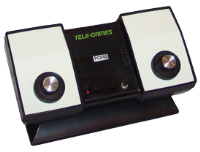
In 1966, at the University of Utah, Nolan Bushnell first saw the game “Space War!” He decided that the game had commercial potential as a coin-operated slot machine, and a few years later he and Ted Dabney worked on a computing device that could be played on a black-and-white television in single-player mode. player mode who had to shoot two UFOs. Hence, this slot machine was launched by Nutting Associates under the name Computer Space. The game was initially set in the company's market, mainly bars, and was not a great success. Bushnell felt that the game was too difficult for the average (possibly drunk) participant and began looking for new ideas.
Bushnell left Nutting Associates to form a new company, Syzygy, with Ted Dabney. They soon hired Allan Alcorn as their first design engineer. The first game was supposed to be a car game, but this idea seemed too complicated. In May 1972, Nolan saw a demonstration of the Magnavox Odyssey, which included a game similar to tennis. He decided that Allan should develop an arcade version of the game, which would be called Pong.
As the company prepared to go public in June of that year, it turned out that the name Syzygy (syzygy, an astronomical term) already existed in California. Bushnell wrote several terms from the game of Go and eventually chose the Japanese word atari, which in the context of Go means a stone or group of stones that can be captured by an opponent. Additionally, Atari's name is certainly much more memorable and easier to pronounce than Syzygy. Atari went public on June 27, 1972 in California.
Atari, Inc.
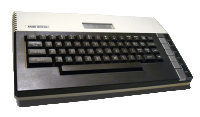
In November 1972, the first Pong was ready. It consisted of a black and white television, special equipment that implemented the game, and a coin mechanism, which included a milk carton into which coins fell. For testing, the machine was installed in one of the pubs in Grass Valley (California), and it soon became clear that the game was a hit. After unsuccessful negotiations with several companies to release Pong, Bushnell and Dabney decided to release the game in-house, and Atari Inc. was founded. as a developer and manufacturer of coin-operated slot machines.
In 1974, Atari released the electronic game Touch Me.
Steve Jobs, who later co-founded Apple with Steve Wozniak, worked at Atari in the 1970s.
In 1975, Atari acquired Cyan Engineering to develop the next generation gaming system (Project Stella) based on the newly released MOS Technology 6502 microprocessor.
In 1976, Bushnell realized that the console he was working on had potential success, but it would require significant funds to bring it to market. So he sold Atari to Warner Communications for $28 million. In October 1977, the video game console was released under the name Atari Video Computer System. Bushnell left Atari in 1979.
Warner Division

In 1977, Atari began selling the Atari VCS (Video Computer System) game console, which could modify games because it used cartridges. The console was later renamed the Atari 2600. This console became the leading video game console in the United States for several years.
Immediately after the release of the Atari VCS, Atari engineers began work on a new system that would replace the 2600 by 1979. In February 1978, Ray Kassar was appointed director of Atari, who wanted the new Atari machine to compete with Apple in the home computer market. At the time, the home computer market was divided between the Apple II, Commodore PET, and TRS-80.
In 1979, Atari began selling 8-bit home computers, the Atari 400 and Atari 800. The Atari 400 positioned itself as a game console with the capabilities of a computer, the Atari 800 as a full-fledged computer with the capabilities of a game console.
Competition in the game console market intensified - in 1982, ColecoVision was released, for which an expansion module was released that allowed games to be run on Atari 2600 cartridges.
In 1982, Atari released the Atari 5200 video game console, based on the hardware design of the Atari 400/800, but not compatible with them. Sales of the 5200 were not particularly successful. Although the console's graphics capabilities were much better than the 2600, the available game library was significantly smaller.
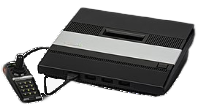
As part of Warner, Atari sold millions of game consoles and home computers. At its peak, Atari accounted for a third of Warner's annual revenue and became the fastest-growing company in the North American market at the time. But there was considerable tension within Atari itself: the three divisions-arcades, consumer games, and home computers-operated separately, had little interaction with each other, and even saw each other as a threat.
In 1982, Atari began selling two 2600 series games that were hyped but disappointing: Pac-Man and E.T. Sales quickly declined, leading to an increase in unsold inventory in stores, lower prices and returns from stores to the supplier, leading to the famous case of destruction of unsold cartridges.
In 1983, the home computer market experienced a price war started by Jack Tramiel of Commodore; Atari had to cut prices to maintain its market share. In addition, in 1983, a crisis broke out in the computer games market. In an attempt to cut costs, Atari moved its production lines to Taiwan.
The events of 1982-1983 had a significant impact on revenue, and Atari became a loss-making division of Warner Communications. Warner shares fell from $60 to $20 per share. Texas Instruments exited the home computer market in November 1983, and many believed Atari would be next. As a result, in 1984, Warner sold Atari computer and game consoles to Jack Tramiel, who was fired from Commodore, which he founded. Tramiel wanted to compete with Commodore with Atari. The combined company is called Atari Corporation. Warner still has a division that produces video games under the Atari Games brand.
Atari Corporation
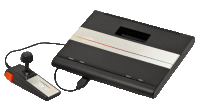
Jack Tramel decided to focus on computer manufacturing. Atari released the XE series computers, compatible with the 400 and 800 models. As a result, the company began to lose the game console market.
In 1985, Atari released the 16-bit personal computer Atari ST.
In 1986, two game consoles developed two years earlier, the Atari 7800 and Atari 2600 Jr., entered the market. The 7800 system had an extensive base of games and could compete with the NES console in its technical characteristics. Atari 2600 Jr. had a low price for those times and was aimed at those who could not afford to buy Japanese gaming systems.
In 1987, the company released the Atari XEGS, a video game console based on and fully compatible with the 65XE computer, but sales were not particularly successful.
In 1989, the Atari Lynx handheld game console was released. Its success was not very great, as the Nintendo Game Boy increased in popularity around the same time. The console existed on the market for two years, after which it was replaced by a newer version: Atari Lynx II.
In 1992, the 32-bit Atari Falcon personal computer was released. In 1993, he released the Atari Jaguar game console. However, these products did not become popular. In 1996, after a series of successful lawsuits, Atari was left with millions of accounts but no products to sell. Tramiel and his family tried to get out of this business: in July 1996, Atari merged with JTS Inc. and formed JTS Corp. In March 1998, JTS sold the Atari brand and related businesses to Hasbro Interactive for $5 million.
Atari Games
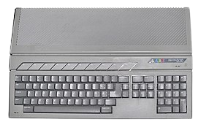
During the 1983 recession, the Atari Coin arcade division was the only part of Atari that was still profitable. In 1984, Warner sold the Ataris video game console and home computer parts to Jack Tramel, but retained Atari Coin and renamed it Atari Games.
Atari Games continued to produce arcade machines and, from 1987, also game cartridges for the NES under the Tengen brand.
From February to April 1989, Atari Games lost competition to Nintendo, the leader in the computer games market, for the exclusive right to distribute the most popular game in the USSR, Tetris, on video consoles and handheld gaming devices. A legal dispute on this issue in 1990 was also lost. This caused significant damage to the company (it had already developed its own version of the game, released about 500,000 copies and carried out a powerful advertising campaign to promote it on the market).
Atari S.A.
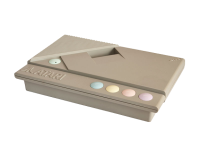
In 1989, Warner Communications merged with Time Inc. and formed the Time Warner Company. In 1993, Time Warner bought a majority stake in Atari Games and made the company part of its Time Warner Interactive division. In mid-1994, Atari Games, Tengen and Time Warner Interactive Group were merged under the name Time Warner Interactive.
In October 2001, the French company Infogrames Entertainment, SA acquired Hasbro Interactive, along with the Atari brand and related intellectual property. In May 2003, Infogrames was renamed Atari, SA. Accessed March 24, 2008. Atari, Inc. was listed on NASDAQ, but Infogrames purchased all remaining public shares.
On January 20, 2013, Atari's American operations (Atari Inc., Atari Interactive Inc., Humongous, Inc., and California US Holdings, Inc.) filed for bankruptcy to separate from their parent company, European Atari SA. All these companies emerged from bankruptcy a year later and formed Atari Casino.
Consoles
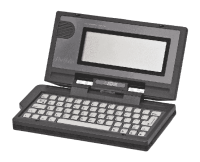
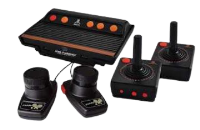
- Pong
- Atari 1020
- Atari 1050
- Atari 2600
- Atari 400/800/800XL
- Atari 65XE
- Atari 130XE
- Atari 5200
- Atari 7800
- Atari XEGS
- Atari Lynx
- Atari Jaguar
- Atari ST, Atari STE
- Atari MEGA ST, Atari MEGA STE
- Atari TT
- Atari Falcon
- Atari Transputer Workstation
- Atari Portfolio
- Atari Flashback
- Atari Flashback 2